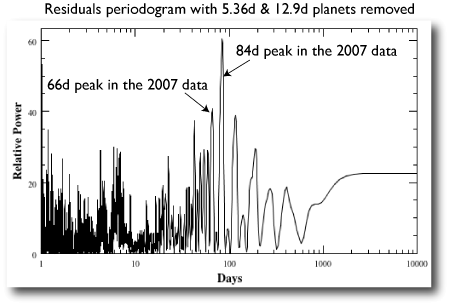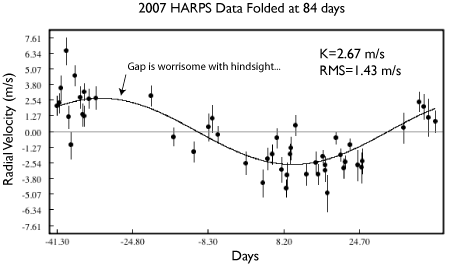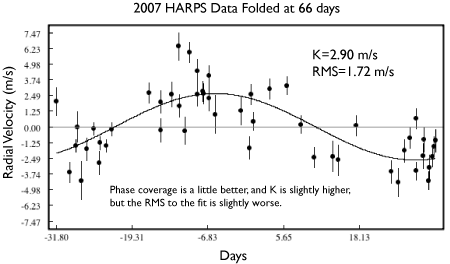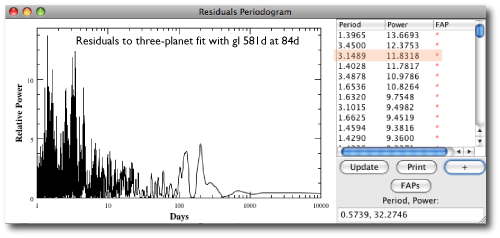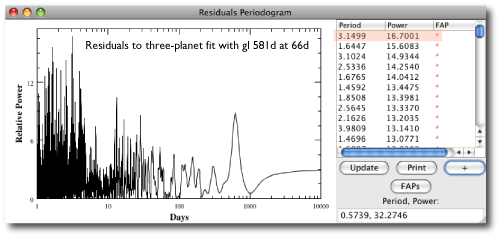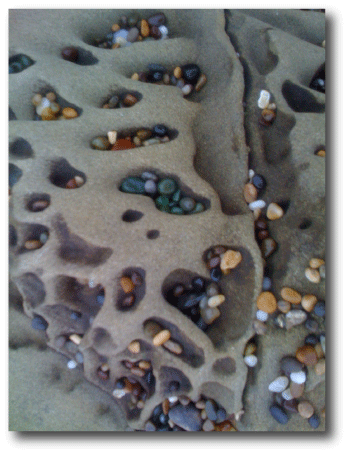
Now I’m certainly not alone in thinking, upon seeing the latest configuration of the Gliese 581 system, Whoa, there’s room for a habitable Earth-mass planet in there…
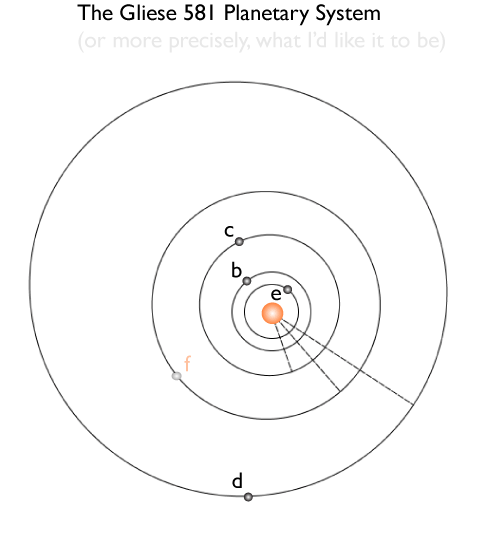
Using the terrestrial planet valuation formula, an Earth-mass planet with a period of 25 days orbiting Gliese 581 is worth 136 million dollars, and needless to say, its detection would be an exciting development. Gliese 581 f seems like such a made-to-order confection that it’s simply got to be there.
Which is a flimsy argument, I admit, but quite frankly, when it comes to Gliese 581, I have no Alpha. I have no idea how and why the Gliese 581 planets wound up with their presently observed properties and configuration. Furthermore, even if one did have a handle on the sequence of events that led to the formation of b,c,d,e and f, and if one wrote that remarkable result up for publication, hardly anyone would believe it. And for good reason. It’s unlikely that the correct blow-by-blow account of what happened in the Gliese 581 protoplanetary disk would lead to any immediately verifiable predictions for any other planetary systems. We’ve observed enough planets now to know that the aggressive nonlinearity of the formation process leads to a bewildering variety of specific outcomes.
It occurred to me that it I might be able to make creatively disingenuous use of Bode’s Law to “predict” the presence of Gliese 581 f at the desired ~25d planetary period. As it stands, Johann Titius pointed out in 1766 that the orbital spacing of the solar system planets is well represented by d=0.4+0.3*(2^i), with i=-Inf, 0, 1, 2, 4, 5, etc. The law worked for Uranus (i=6) and Ceres (i=3), but then famously overperformed by placing a transuranian planet at 38.8 AU. Given that the Titius-Bode relation contains three parameters (a=0.4, b=0.3, and c=2) it’s possible to choose a,b, and c to exactly reproduce Gliese 581 e, b, and c. Unfortunately, the results for d and and f are then rather less than satisfactory, so I decided to abandon a Bode’s law scheme in favor of a straightforwardly bald assertion of Gliese 581 f’s existence.
It’s perhaps for good reason that the Icarus Editorial Office states:
Icarus does not publish papers that provide “improved” versions of Bode’s law, or other numerical relations, unless they are accompanied by some detailed physical/chemical arguments to explain why the new relation is to be preferred.
In the next post, I’ll look in detail at how and when Gliese 581 f can be detected: scenario four.


